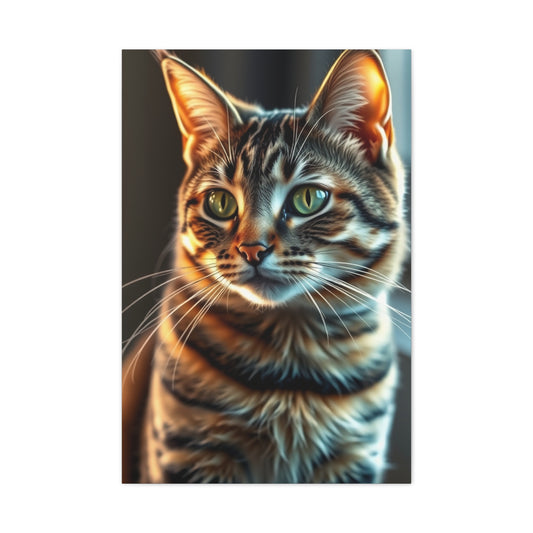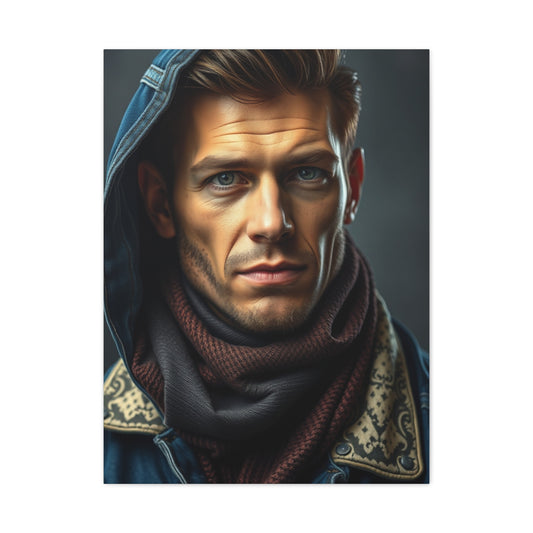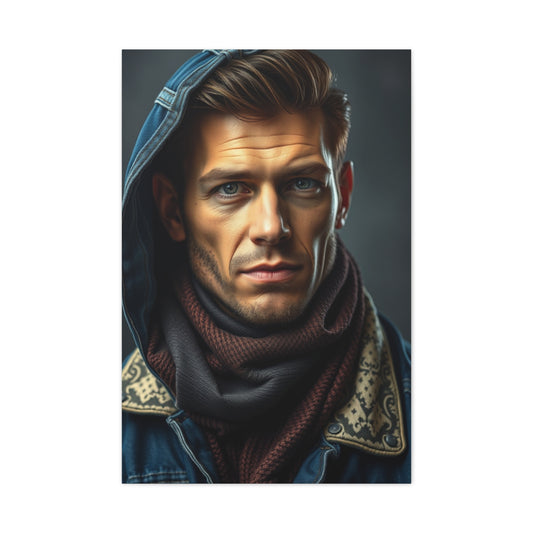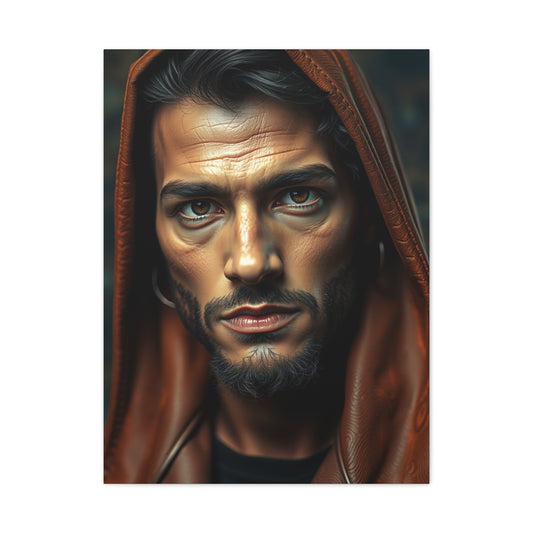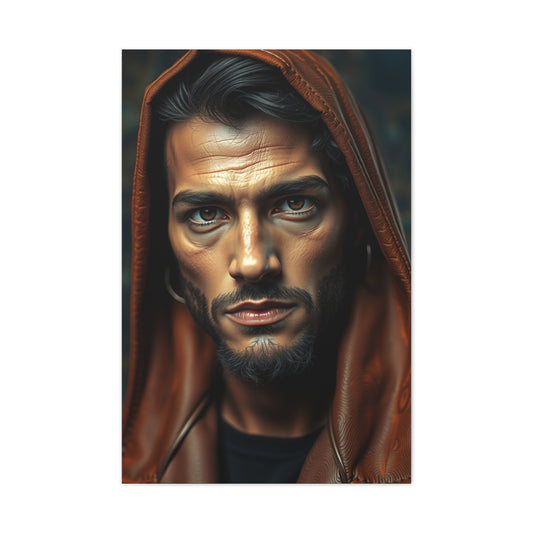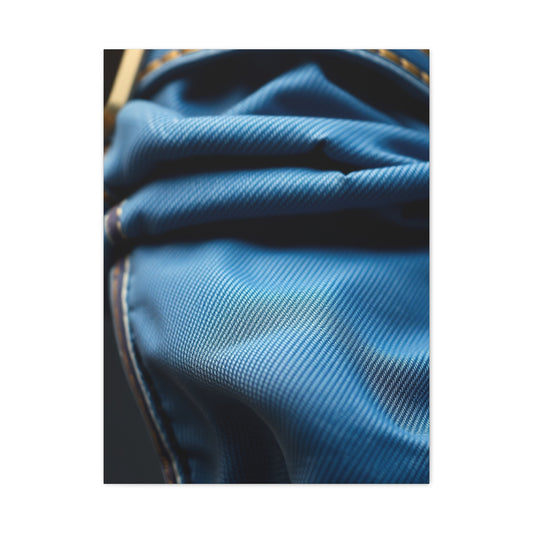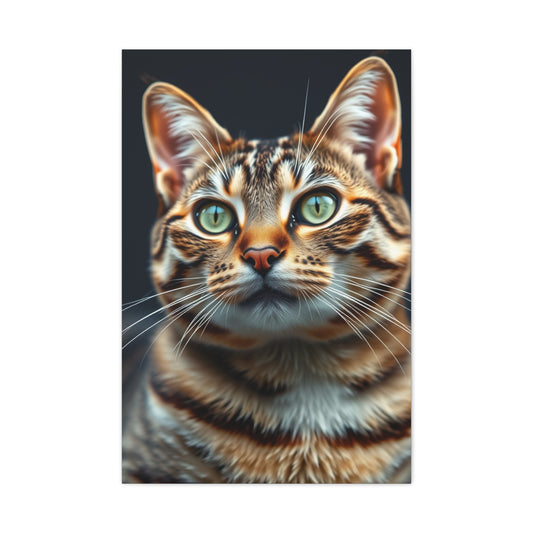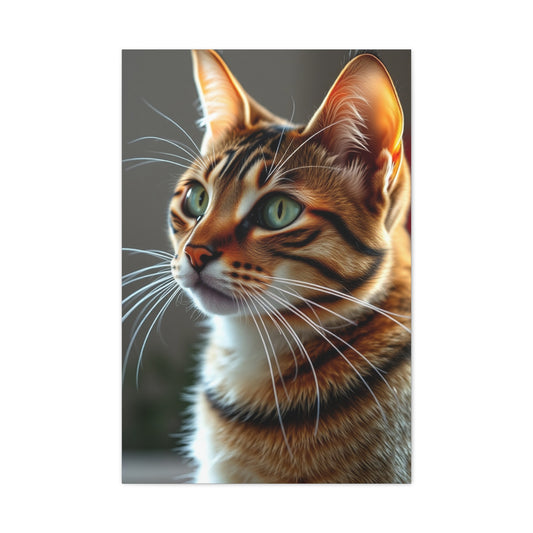3D digital art has quickly evolved from a niche discipline into one of the most visually dynamic and culturally relevant forms of creative expression. It has grown beyond its early associations with industrial modeling and static design. Today, it spans film, music, NFTs, video games, advertising, and immersive digital experiences. Thanks to powerful tools like Blender, Cinema 4D, and Maya, artists now shape photorealistic landscapes, hyper-stylized environments, and emotional narratives that challenge conventional artistic boundaries.
In this immersive and ever-expanding visual field, technology and creativity are advancing side by side. These groundbreaking 3D artists are forging new visual languages, combining meticulous technique with imaginative storytelling. Whether you're seeking inspiration for your next creative venture or simply want to immerse yourself in digital artistry, these creators offer some of the most compelling and visionary work available today.
The Expanding Universe of 3D Art
The scope of 3D digital art has broadened significantly over the past decade. While its core remains in three-dimensional rendering, the applications range from fine art and entertainment to marketing and architecture. Artists utilize complex software to craft richly detailed works that might be surreal, futuristic, dreamlike, or unsettlingly realistic. With global access to rendering engines and digital platforms, 3D artists now publish their work across social media, NFT marketplaces, and professional collaborations. The result is an incredibly diverse and vibrant community of creators pushing the limits of modern design.
Meet the Visionaries Leading the 3D Art Renaissance
1. Antoni Tudisco
Antoni Tudisco is a Hamburg-based 3D artist who infuses his work with a distinct fusion of digital surrealism, luxury design, and experimental composition. His portfolio reflects a kaleidoscope of glossy textures, exaggerated forms, and hyper-stylized fashion aesthetics. Antoni’s creations often look as though they belong in a futuristic fashion campaign or a concept-driven music video. His ability to merge art and branding has led him to collaborate with major global names such as Nike, Google, Versace, and Adobe. What makes his visuals stand out is not just their vibrancy but their dynamic energy and layered storytelling. Each composition is a carefully orchestrated mix of color theory, metallic reflections, and movement that draws viewers into a high-concept digital environment. Tudisco uses tools like Cinema 4D and Octane Render to achieve his signature polish, and his distinctive voice has made him a pioneer in the commercial side of 3D digital art.
2. Visualdon
Visualdon, originally from Zimbabwe and currently based in the United Kingdom, has mastered the craft of creating ethereal, sci-fi-inspired animations that transcend visual expectations. His signature work often involves endless loops, digital dreamscapes, and surreal celestial elements that evoke the feeling of floating through alternate dimensions. With a firm grasp of Cinema 4D, Octane Render, and After Effects, he seamlessly combines technical sophistication with a visionary aesthetic. His animations feature lone astronauts, glowing orbs, undulating alien terrain, and cosmic vistas. There is a hypnotic quality to his work, often described as visual poetry rendered in motion. Visualdon’s creations speak to fans of ambient visuals and music, and many of his pieces are synced with dreamy electronic scores to enhance emotional resonance. His work has captivated audiences on platforms such as Instagram and TikTok, where he continues to redefine what digital storytelling looks like through ambient 3D loops and narrative ambiguity.
3. Fvckrender
Frederic Duquette, widely known as Fvckrender, has built a strong reputation as a digital sculptor specializing in crystalline surrealism and high-fidelity digital aesthetics. Based in Vancouver, his art explores themes of transcendence, isolation, and futurism. His sculptures frequently feature disembodied human figures made of glass, chrome, or ice, floating against stark, often abstract backgrounds. What sets Fvckrender apart is his ability to make cold, angular surfaces feel emotionally evocative. Using tools such as Cinema 4D and Redshift, he builds immersive environments that feel like visions from a parallel reality or digital temple. Fvckrender’s art exists at the intersection of technology and spirituality, often infused with a philosophical undertone that challenges perceptions of identity and consciousness. His pieces are frequently minted as NFTs, and his work is in high demand among collectors and tech-centric art fans. With his icy color palettes and precise geometric symbolism, Fvckrender stands as a leading figure in futuristic digital minimalism.
4. Studio-JQ (Jonathan Quintin)
Jonathan Quintin, known professionally as Studio-JQ, is a UK-based 3D artist whose creations explore cosmic themes, space-age landscapes, and surreal digital dreams. His visuals are drenched in luminous colors, galactic gradients, and glowing architecture, creating otherworldly environments where science fiction and design converge. Jonathan often features lone figures navigating vast digital terrains, suggesting stories of discovery, existential curiosity, or interdimensional travel. He applies vibrant tones and chromatic contrast to construct scenes that feel simultaneously futuristic and nostalgic. His work is not just visually impactful but emotionally rich, encouraging introspection and awe. Studio-JQ also collaborates with commercial clients like Tommy Hilfiger, Mitsubishi, and independent musicians to develop campaign visuals and album art. He’s proficient in tools like Blender and Octane Render, and his ability to blend storytelling with motion design has placed him among the rising stars in the digital visualization space. His 3D landscapes often feel like scenes pulled from the dream archive of a voyager in a forgotten galaxy.
5. Annibale Siconolfi
Annibale Siconolfi, also known as Inward, is a visionary Italian 3D artist whose work merges architectural detail with dystopian storytelling. With a professional background in architecture, Annibale constructs colossal digital cities layered with chaotic urban life, vertical housing structures, and atmospheric decay. His compositions often explore themes of environmental collapse, technological overgrowth, and human overpopulation. The structures in his digital worlds feel alive—pulsating with complexity, crowded with human elements, and drenched in urban symbolism. His use of lighting and texture evokes a sense of wonder and melancholy, and each piece invites viewers to reflect on the consequences of modern civilization. Annibale uses Cinema 4D and Octane for his modeling and rendering processes, adding elements in Adobe Photoshop for fine-tuning. He has an unmistakable visual language that blends realism with imagination, and his art often feels like a prophetic glance into the architectural future of Earth, or perhaps a distant colonized planet gone awry.
6. Sarper Baran
Turkish artist Sarper Baran crafts cinematic and emotionally saturated 3D artwork infused with noir aesthetics and futuristic symbolism. His work is characterized by its somber palettes, gleaming neon highlights, and lonely digital protagonists walking through digitally rendered worlds that resemble dreamlike metropolises or liquid cities. His compositions are frequently infused with rain, fog, or reflections, creating an atmosphere that feels part noir thriller, part cyberpunk fantasy. Sarper is one of the founding members of ArtGrab, a platform supporting digital artists, and he is a prominent voice in the global digital art community. Using a combination of Octane Render, Cinema 4D, and Adobe tools, he creates visual stories that often suggest solitude, rebellion, or personal transformation in an artificial world. There is a poetic stillness in his imagery that resonates with fans of both digital design and contemporary art. His cityscapes, filled with reflections and architecture drenched in fluorescent mood, feel as though they were pulled from the frame of an unwritten sci-fi screenplay.
7. Josh Pierce
Josh Pierce is a Los Angeles-based motion designer and 3D visual artist whose work focuses on the intersection between the natural and the surreal. His compositions blend ethereal landscapes with geometric forms of light, such as glowing rings or monoliths, emerging from oceans, forests, and open skies. His use of color is profoundly atmospheric, often showcasing gradients that fade into misty or celestial backdrops. With tools like Cinema 4D, Octane, and Photoshop, Josh explores visual serenity and surreal symbolism in equal measure. Many of his pieces feel meditative, as though inviting the viewer to contemplate their place in the universe. Josh’s work is widely recognized in the ambient digital art space and has been featured in NFT galleries and meditation platforms. His visual style is deeply reflective and speaks to those seeking meaning and beauty in stillness. The emotional resonance of his work makes it stand out not just as design but as visual philosophy rendered in digital form.
8. Marco Zagara
Marco Zagara is an Italian visual artist who uses Blender to craft enchanting 3D environments that blur the boundary between fantasy and familiar. His work features whimsical characters, dreamy lighting, and surrealist elements that feel like vignettes from forgotten dreams. Each composition by Marco carries a serene yet uncanny undertone, as if his imagined worlds exist just beyond human perception. His scenes often include oversized animals, humanoid beings, or otherworldly creatures interacting within pastel-colored environments. What makes Marco’s work particularly compelling is the balance between simplicity and depth; his minimalist structures are imbued with subtle emotional narratives that make the viewer pause and reflect. Whether it’s a lone figure walking beneath a levitating moon or a quiet robot playing with birds in a meadow, his pieces invite audiences into a universe that is gentle, surreal, and filled with wonder. His use of Blender’s capabilities allows him to shape textural complexity and emotional resonance with an accessible, playful visual language.
9. Kaiwan Shaban
Kaiwan Shaban is a cinematic storyteller who transitioned from photography to 3D digital art, bringing with him a deep understanding of visual drama and emotional tone. His images feel like paused frames from a larger narrative—melancholic, atmospheric, and rich with mood. Often working with Blender and post-processing tools, Kaiwan creates scenes that evoke feelings of loneliness, introspection, or transition. His digital protagonists are typically lone wanderers—silhouettes against burning cars, street lights, or flooded alleys—suggesting themes of displacement, memory, or personal reckoning. His style is rooted in a neo-noir aesthetic with striking use of contrast, smoke, rain, and lighting effects. His understanding of composition is unmistakable, a natural extension of his photography background, which translates beautifully into the world of three-dimensional space. Kaiwan’s art often connects with those drawn to cinematic realism and emotional storytelling, positioning him as a key figure in the movement of narrative-driven 3D visuals that echo the energy of contemporary filmmaking.
10. Davansh Atry
Davansh Atry is a self-taught 3D artist from India whose distinctive style blends ambient surrealism with nostalgic visual tones. He draws inspiration from analog film photography, especially night photography, and his artworks often feel like visual poems cloaked in neon and mystery. Using Blender as his main creative tool, Davansh constructs cinematic scenes that hover between reality and illusion. His characters, frequently surrounded by quiet landscapes or minimal architecture, evoke emotional solitude and curiosity. The light in his scenes often acts as a narrative force—glowing signs, distant planets, or scattered reflections create an ethereal atmosphere that transcends physical space. His use of muted yet colorful tones enhances the otherworldly nature of his art. Viewers are often drawn into his work by its understated complexity and timeless aesthetic. His visual compositions speak to those who find beauty in silence, darkness, and the moments that lie between waking and dreaming.
11. Alexy Préfontaine (Aeforia)
Alexy Préfontaine, widely recognized as Aeforia, is a Canadian digital artist from Montreal whose elegant approach to 3D design emphasizes emotional storytelling and conceptual portraiture. His work combines stylized human figures with cosmic or surreal elements, often exploring themes of identity, self-awareness, and introspective transformation. Aeforia’s ability to manipulate light and texture results in highly polished and evocative scenes where digital characters appear to float in liminal, symbolic spaces. He skillfully incorporates smooth gradients, mirror reflections, and glowing elements to achieve a dreamlike quality that is both modern and timeless. Alexy uses a variety of tools including Blender and Adobe Suite to bring his visions to life, drawing on his design background to create harmonious compositions. His art resonates strongly in both the NFT space and traditional digital galleries, making him one of the most followed and emulated voices in contemporary 3D portrait art. His visuals do not just show characters—they express internal states of being with delicate yet powerful imagery.
12. Eliseo H. Zubiri
Eliseo H. Zubiri is an Argentinian designer and art director celebrated for his emotionally delicate and cinematographically inspired digital landscapes. His 3D work reveals a mastery of tone and storytelling through minimalist but impactful visuals. Often characterized by soft light, subtle colors, and poetic subject matter, Eliseo’s images feel like memories rendered in pixels. Whether it’s a lone figure walking beneath a pink sky or urban settings filled with surreal fog, his pieces evoke a peaceful melancholy that captivates the viewer. His collaborations with filmmakers and music creators further reinforce the narrative potential of his work. Eliseo’s art is less about visual spectacle and more about emotional atmosphere; his use of negative space and visual metaphors engages viewers on a reflective level. By combining Cinema 4D with color grading techniques, he is able to generate a distinct aesthetic that stands out for its elegance and depth. His creations are an exquisite balance of light, narrative silence, and visual poetry.
13. Lumi
Lumi is a digital artist whose radiant work pulses with color, optimism, and cosmic fantasy. Known for his vast, open digital environments and celestial motifs, Lumi creates 3D visuals that feel like scenes from another dimension where color and emotion intertwine. His use of bright, saturated palettes and smooth gradients gives each piece an aura of positivity and scale. His landscapes often include massive celestial bodies, floating islands, or crystalline formations hovering over serene terrain. Lumi’s ability to capture awe-inspiring wonder has led to collaborations with major platforms like Adobe, Netflix, and Universal Studios. His compositions often revolve around the theme of exploration—be it spiritual, emotional, or intergalactic. Lumi masterfully constructs these visions using Blender and post-production techniques, ensuring each piece feels immersive and transcendent. His work is ideal for those who are drawn to uplifting digital art that feels visionary and boundless, echoing the curiosity of those who imagine a universe beyond our own.
14. Matt Mills
Matt Mills is a Texas-based artist and software engineer whose visual work marries algorithmic abstraction with vibrant psychedelia. His 3D pieces often explore hypnotic patterns, abstract formations, and surreal light phenomena, creating artworks that feel both deeply meditative and strikingly futuristic. With a background in programming, Matt integrates generative design techniques into his creative process, resulting in visuals that shimmer with movement and precision. His work is heavily influenced by audio-visual synergy, and much of it has been used as visual accompaniment for electronic music and ambient meditation. He creates using a mix of Photoshop, FilterForge, and Cinema 4D, constructing intricate patterns that invite slow contemplation. Rather than focusing on characters or narrative, Matt’s digital art emphasizes geometry, symmetry, and mood. His creations are perfect for those who seek transcendence through repetition and abstract beauty. In the realm of modern psychedelic visual art, Matt has carved a niche that blends digital logic with artistic intuition.
15. Eashan Misra
Eashan Misra is a visionary 3D artist from India whose digital storytelling revolves around astronaut figures immersed in whimsical or surreal environments. His work draws inspiration from science fiction, introspective philosophy, and dream-like symbolism. Often placing his space-suited protagonists in unusual yet emotionally rich scenarios—such as an astronaut staring at a goldfish in their helmet or floating above Earth while engaging in everyday activities—Eashan creates a narrative fusion of humor and melancholy. These juxtaposed elements speak to the human condition, using space as a metaphor for inner exploration, solitude, or playful detachment. With a strong sense of color composition and character design, his scenes resonate with both fantasy lovers and those seeking thoughtful artistic storytelling. Using Blender as his primary software, he refines each visual with attention to lighting, atmosphere, and emotion, crafting snapshots that feel like chapters from an illustrated cosmic journey. His unique perspective has earned him growing recognition in digital communities across social platforms and NFT spaces.
16. Dizzy Viper
Dizzy Viper is the alias of an Austrian 3D artist whose dedication to daily renders has garnered him a devoted following over the years. With a record of creating one complete artwork every day for more than five consecutive years, his portfolio is both extensive and dynamic. Dizzy Viper’s style is rooted in cinematic design, moody lighting, and futuristic themes, often focusing on hyper-detailed vehicles, dystopian environments, and sci-fi narratives. His scenes frequently feature luxury cars suspended in midair, mysterious urban backdrops, and glowing night skies tinged with melancholy. Each piece balances technical complexity with emotional resonance. He uses Cinema 4D paired with Octane Render to achieve his distinctive photorealistic effects and precise control over materials and reflections. This constant evolution and experimentation have made him a wellspring of inspiration for other digital creators. His ability to create diverse compositions without compromising visual quality illustrates his mastery of 3D rendering and storytelling under time constraints.
17. Rolands Zilvinskis
Rolands Zilvinskis is a Latvian-born, Ireland-based digital artist known for deeply evocative science fiction compositions. His work typically features humanoid figures positioned in cinematic, often surreal settings. These characters may be robotic, masked, or obscured, yet they convey complex emotions through posture, lighting, and environment. Zilvinskis creates a visual dialogue that explores themes of memory, identity, and transformation. His backgrounds often consist of foggy landscapes, illuminated signage, or crumbling digital architecture—settings that seem caught between worlds. Rolands uses tools such as Blender and Octane to generate high-impact visuals layered with atmospheric effects. The emotional gravity of his scenes is amplified by his skillful use of contrast, shadow, and reflective surfaces. Each piece tells a silent story that the viewer is left to interpret, making his portfolio feel like a collection of poetic visual short films. He is an artist who elevates sci-fi beyond spectacle, using it as a language of introspection and subtle narrative.
18. Seventh Voyage
Seventh Voyage is a multidisciplinary artist who infuses pop culture with a dark surrealist twist through the power of 3D art. Known for reimagining familiar characters from movies, video games, and anime, he places them in eerie, often unsettling scenarios that disrupt their usual heroic narratives. These transformations include underwater reimaginings, horror-inspired overlays, and emotionally ambiguous expressions that challenge traditional storytelling. Using Blender as his primary platform, his visuals often involve flowing fabrics, glowing deep-sea creatures, crumbling textures, and dreamlike color palettes that range from neon to desaturated monochrome. There’s a deliberate tension in his work—balancing comfort with discomfort, familiarity with distortion. This unique reinterpretation allows viewers to engage with iconic figures in new and often thought-provoking ways. Seventh Voyage has successfully built a loyal fanbase by consistently delivering artwork that feels both cinematic and psychologically charged. His visual language is rich with metaphor, making each image an invitation to explore hidden meanings behind the mask of digital fantasy.
19. Marischa Becker
Marischa Becker is a 3D digital artist from South Africa whose creations burst with vibrant energy, intergalactic themes, and strong character presence. Inspired by superhero mythology, space opera aesthetics, and futuristic cityscapes, her visuals often place empowered figures in glowing, expansive settings that feel both epic and intimate. Her use of color is bold, frequently featuring electric pinks, purples, and cosmic blues, lending each piece a dynamic, almost cinematic energy. Her characters may appear on alien worlds, inside futuristic labs, or navigating cosmic storms, each rendered with detail and expressive posture. Marischa incorporates elements of fantasy, sci-fi, and emotional symbolism, building universes that reflect resilience, curiosity, and transformation. Her style is grounded in visual storytelling that appeals to fans of animated films and stylized 3D renderings. Using Blender and Photoshop, she builds rich layers of light and shadow to evoke depth and vibrancy in each work. Her visual universe is one of empowerment, rooted in imaginative storytelling and visual spectacle.
20. Liam Pannier
Liam Pannier is a French 3D artist known for his quiet, contemplative renderings of faceless astronauts exploring surreal and often emotionally symbolic environments. His minimalist approach and soft lighting create a sense of isolation and grandeur. In his universe, space is not just a setting, but a metaphor for introspection, silence, and the search for meaning. The faceless figure is a recurring motif—a symbol of universality, allowing any viewer to project their own emotions and questions onto the character. Liam’s landscapes often include floating pyramids, endless deserts, or surreal architecture suspended in weightless gravity. These abstract compositions are balanced with serene color palettes and poetic framing, often evoking a meditative effect. His primary software tools include Blender and compositing tools that refine the mood through atmospheric lighting and post-processing. Liam’s work connects with audiences looking for visual art that evokes both imagination and personal reflection. His scenes feel like postcards from an interstellar journal, intimate yet vast.
21. Perry Cooper
Perry Cooper is an accomplished motion designer from the United States with over two decades of experience in the 3D creative field. Known for his playful, polished, and often whimsical renders, his artwork incorporates vibrant product design, miniaturized environments, and humorous visual metaphors. He specializes in crafting intricate models that resemble toys, gadgets, or micro-architectural forms, all placed within lively pastel or fluorescent color schemes. With a strong foundation in Cinema 4D and Adobe After Effects, Perry’s work balances technical excellence with light-hearted charm. His miniatures might include suitcases turning into football stadiums or candy-colored cityscapes that animate into life. His designs are instantly engaging, appealing to both casual viewers and professional designers. Perry’s portfolio includes collaborations with global brands and viral digital campaigns that showcase the power of storytelling through simplicity and joyful design. He brings a tactile, almost physical quality to digital media, inviting audiences into compact worlds full of personality and precision.
22. Teun van der Zalm
Teun van der Zalm is a Dutch digital artist and visual engineer who brings the beauty of astrophysics to life through high-fidelity 3D simulations of space. Specializing in cosmic structures like nebulae and galactic formations, Teun's work is a convergence of science and art. His visuals are built on mathematical accuracy, using data-driven algorithms and volumetric rendering techniques to mimic how light and matter interact in outer space. Each of his animations is more than a visual effect—it’s an experiential window into the physics of the universe. Teun’s creations are often looped, mesmerizing sequences that show cosmic gas clouds shifting, morphing, and glowing in slow motion. He uses advanced rendering engines to recreate nebula structures in ultra-high definition, making his work invaluable to both scientific presentations and artistic showcases. His portfolio is particularly revered by those with a fascination for astronomy, simulation, and digital visual effects that transcend conventional design boundaries.
23. Yomagick
Yomagick is a Polish 3D artist known for constructing immersive dreamscapes that blend surrealism, architecture, and emotion. His worlds are pastel-hued and geometrically perfect, often populated with stairways that lead nowhere, floating objects, and open portals surrounded by clean symmetry. What makes his work compelling is its dreamlike logic—spaces that feel physically impossible yet emotionally resonant. His digital environments often resemble architectural utopias suspended in liminal space, drawing from the visual language of retrofuturism, spiritual minimalism, and symbolic abstraction. Yomagick utilizes Blender and Cinema 4D to bring these concepts to life, often adding grainy textures and ambient lighting to invoke the feeling of a lucid dream. Each composition feels contemplative, encouraging the viewer to wander through space and form their own narrative. His creations appeal to admirers of digital architecture, fantasy design, and emotionally nuanced 3D landscapes. The balance of surreal art direction and precise execution makes his portfolio stand out in the current wave of experimental digital art.
24. Ahmed Emad Eldin
Ahmed Emad Eldin is an Egyptian digital artist whose introspective and surreal 3D artworks explore themes of memory, identity, and metaphysical transition. Best known for designing the cover art for Pink Floyd’s final album, Ahmed gained international recognition for his ability to merge emotional subtlety with conceptual depth. His digital compositions are typically rich in atmosphere and symbolism, often featuring solitary figures in surreal surroundings like endless deserts, levitating doorways, or deconstructed architecture. Ahmed's use of lighting, fog, and layered color gradients gives his scenes a cinematic, dreamlike quality. His aesthetic often explores the tension between stillness and movement, the internal and external world, creating a narrative that transcends language. Tools like Photoshop and Cinema 4D allow him to craft detailed, high-resolution visuals that retain a sense of softness and mystique. His art serves as both a meditation and a story—inviting viewers into realms where emotional weight meets abstract design.
25. Boldtron
Boldtron is a 3D artist and creative technologist based in Barcelona whose work defies conventional categories by merging futuristic fashion, abstract sculpture, and synthetic textures. His compositions are often populated with humanoid figures that appear to be formed from liquid metal, plastic polymers, or transparent crystalline elements. These digital beings are posed as if in a high-concept gallery, showcasing the fluidity between fashion, identity, and material experimentation. Boldtron’s approach to digital art is highly textural—he pays meticulous attention to the way light interacts with virtual surfaces, creating visuals that look tactile despite existing entirely in digital form. His collaborations with major brands like Adobe and Nike reflect his commercial impact, but his personal work delves into deeper explorations of posthumanism and digital aesthetics. Boldtron uses Cinema 4D and Redshift for rendering, resulting in highly detailed and smooth compositions that redefine contemporary digital portraiture. His work exemplifies the cutting edge of digital identity and conceptual elegance.
26. Mostafa Khaled
Mostafa Khaled is a Cairo-based 3D visual artist known for his expressive daily renders that combine futuristic themes, symbolic architecture, and hyper-realistic lighting. His work often centers around ambient storytelling, where solitary figures or abstract symbols occupy glowing environments filled with mystery and philosophical undertones. Mostafa’s aesthetic bridges the gap between sci-fi design and poetic surrealism. His digital spaces are often vast yet minimal—abandoned temples, neon-lit corridors, or cosmic arenas that seem to echo with silence. Each piece he produces suggests a question rather than offering a conclusion, allowing the viewer to form their own interpretation. Using Cinema 4D and post-processing software, he achieves atmospheric depth, fine detail, and a luminous color spectrum that defines his signature style. His daily art practice reflects his commitment to evolution and experimentation, continuously pushing the boundary of what storytelling through 3D design can achieve. Mostafa’s visuals are both symbolic and cinematic, making them resonate across cultural and artistic landscapes.
27. Fesq
Fesq is a Brazilian 3D artist whose work explores cybernetic evolution, abstract anatomy, and transformation through digital metaphor. His humanoid characters are often portrayed mid-metamorphosis, adorned with glowing circuitry, geometric intrusions, or hybridized mechanical limbs. His color schemes lean heavily on saturated purples, electric blues, and molten golds—palettes that amplify the intensity of his themes. These visual stories explore the intersection of technology, humanity, and consciousness, often through eerie, symbolic imagery. Fesq’s characters are sometimes emotionless, sometimes anguished, always compelling. His renderings are sharply detailed and deeply atmospheric, often bathed in neon glow or immersed in inky shadows. Using Blender and Substance Painter, he meticulously builds complex textures and reflective surfaces that give his figures a sculptural realism. His cyberpunk sensibility merges with philosophical undertones to craft work that is not only visually arresting but also intellectually intriguing. For viewers interested in post-digital identity and speculative design, Fesq offers a rich and transformative visual journey.
28. Lorem de Loop
Lorem de Loop is a master of digital abstraction, crafting mesmerizing 3D art that manipulates light, refraction, and optical illusion. Known for his unique use of glass-like materials, reflective gradients, and geometric compositions, Lorem’s work is a synthesis of science, art, and psychology. His pieces evoke a sense of weightless suspension, as though physics has been recalibrated within the boundaries of each frame. Using tools like Octane and Cinema 4D, Lorem achieves immaculate detail and clarity, making his forms appear as if they were photographed rather than rendered. Many of his visuals play with perception—intersecting rods, folded dimensions, and glass tubes that distort the space they occupy. His interest in visual tension and symmetry reflects influences from both modern architecture and sacred geometry. Lorem’s digital environments function like living sculptures that explore human perception and the language of form. He builds optical landscapes where vision and structure merge into poetic abstraction.
29. Brellias (Matías Vivanco Brellenthin)
Matías Vivanco Brellenthin, known as Brellias, is a Chilean digital artist whose haunting 3D renderings evoke a dystopian mythology. His work often explores themes of decay, memory, and isolation, using vast digital landscapes flooded with moody purples, blues, and glowing anomalies. Brellias crafts speculative worlds that feel like post-human dreamscapes—simultaneously eerie and beautiful. Using Blender as his main software, he renders clock towers suspended in pink skies, ancient relics surrounded by neon mists, and masked figures lost in forgotten cities. Each composition feels like a moment suspended in narrative time, inviting viewers to decipher the story behind the image. His use of volumetric light and subtle grain creates a filmic texture that adds emotional depth. Brellias excels at transforming abstract concepts into atmospheric digital art that resonates on both visual and symbolic levels. His pieces serve as open-ended allegories of contemporary existence, echoing questions about presence, permanence, and memory in a technological age.
30. Shaun Jonas
Shaun Jonas is a digital storyteller who brings cinematic sensibilities to the 3D art world. Drawing influence from film, philosophy, and psychological narratives, his compositions are immersive and layered with metaphor. Whether featuring masked figures, symbolic props, or surreal juxtapositions, Shaun’s images are crafted with narrative precision. He uses Blender and Photoshop to construct scenes that feel like paused stories—each frame inviting interpretation. His work often explores mental landscapes, merging the symbolic with the familiar to challenge viewers' assumptions. Shaun’s visual approach incorporates rich textures, soft lighting, and a deep understanding of character design. By pairing iconic figures with original concepts or placing them in existential situations, his art becomes a visual exploration of thought, emotion, and storytelling. His unique voice in the 3D art community has drawn both popular and critical attention, thanks to his ability to make surrealism feel both personal and universal.
31. Maskarade (Brandon Bolmer)
Brandon Bolmer, known artistically as Maskarade, is a California-based visual and musical creator who merges baroque detail with futuristic elegance in his 3D work. His portfolio includes encrusted cyborgs, golden anatomy, and mythological hybrids rendered with precision and drama. Maskarade’s figures are often human-like but layered with jewelry, armor, or cybernetic implants, blending themes of vanity, transformation, and digital immortality. His compositions are steeped in metallic textures, jewel-toned lighting, and surreal backdrops. With a background in music, his work often carries rhythmic visual structure and symbolic resonance. Using Cinema 4D and digital sculpting software, Maskarade achieves a level of detail and texture that makes each character feel monumental. His art feels like portraits of divine beings from a parallel reality—part fashion editorial, part myth, part dream.
32. Tuomo Korhonen
Tuomo Korhonen is a Finnish 3D visual artist known for creating emotionally evocative characters placed in symbolic or surreal environments. His work often serves the music industry, where mood and emotion are vital. Tuomo’s characters are both haunting and beautiful—metallic faces with flowers for eyes, figures submerged in fog, or beings caught in transformative states. His lighting techniques are subtle yet powerful, emphasizing the emotional weight of his subjects. His use of color is expressive, with muted tones, glowing accents, and painterly shadows adding depth and atmosphere. Tools like Blender and Photoshop allow Tuomo to refine his distinctive style, combining traditional art principles with modern rendering technology. His visual identity is rooted in introspection, mystery, and the metaphysical, making his work resonate on both emotional and conceptual levels.
Final Thoughts on the 3D Digital Art Revolution
The future of 3D art is deeply intertwined with technological evolution and human creativity. These 32 artists represent the forefront of visual innovation, using powerful tools to explore emotion, imagination, and futuristic narratives. Their creations go far beyond aesthetic appeal—they provoke thought, explore identity, and offer a glimpse into alternate realities.
Whether you're a professional creative, a design student, or someone fascinated by digital innovation, these artists are essential sources of inspiration. Their contributions continue to redefine how we experience visual storytelling in the digital age.











